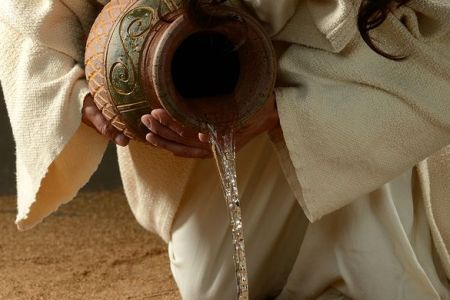This Tuesday we will be discussing Chapter 4 – the Samaritan Woman at the Well – of Liz Curtis Higgs’ book Bad Girls of the Bible. Please read her story in John 4. This woman (whose name we never learn) may be the most marginalized person we will meet in Scripture.
First, she is a woman. Jesus lived during a time that placed many restrictions on women (not unlike Saudi Arabia today). But beyond these restrictions, women were viewed as having less value and less dignity than men. Josephus, a first-century Jewish historian, writes in his book, The Antiquities of the Jews, that in Jewish court settings, “the testimony of a woman shall not be admitted on account of the levity and boldness of their sex.” Also, during this time, Jewish Morning Prayer contained a line that said “Blessed art thou, King of the Universe, that thou hast not made me a woman.” (This is the prayer that the Pharisee is praying in the parable of the Publican and the Pharisee in Luke 18.) Because of her sex, she was a second-class citizen.
Second, she is a Samaritan. At the time of Jesus, Jews viewed Samaritans as heretics and half-breeds. The Samaritans trace their lineage through the ancient northern kingdom of Israel and particularly through the tribes of Manasseh and Ephraim. They share the same basic Torah with Judaism, however, they believe that Mt. Gerizim (not Jerusalem) is the holy place to worship God. See, Deut. 11:29. As to their ancestry, the book of Kings, however, calls into question the lineage of the Samaritans. According to Kings, when Israel fell to the Assyrians, the Assyrians removed all of the Israelites from the area and resettled the entire area with other nations. See, 2 Kings 17:24-40. According to Kings, the Assyrians brought back some of the Israelite priests to the area, but the resettled people developed a syncretic religion combining Israelite worship with their traditional pagan worship. To be Jewish was to have a proper ancestry and a proper worship. Samaritans fell short on both accounts. Because of her ethnicity, she was an outcast from Jewish society.
Finally, this Samaritan woman appears to be an outcast from her own sex and ethnic group. Within this culture, the drawing of water at a well was a communal activity for women. It was one of the few opportunities women had to socialize on their own. (For an interesting account of the importance of women at the well in contemporary Afghanistan, please review this Article from Princeton Alumni Weekly.) Water was usually drawn in the early morning or evening when it was cooler. Here, however, the woman appears at the well alone and in the middle of the day. She was not welcome even in her own community of Samaritan women. She was an outcast of an outcast of a marginalized group. As you read through the story, keep in mind her complete lack of any social standing.
Mrs. Higgs’ blog post on the Samaritan Woman at the Will is HERE. Her discussion question this week is:
Does the omission of the Samaritan woman’s name make her story more believable or less so? More powerful or less so? She came looking for water but instead found Jesus. Was the meeting at Jacob’s well a coincidence or a God incident? What leads you to this conclusion?
Dinner is at 6. The menu is Italian Wedding Soup and Mediterranean Finger Sandwiches. Film at 6:45. Hope to see you here.
Just then his disciples came and they were amazed that he was talking with a woman.
John 4:27

